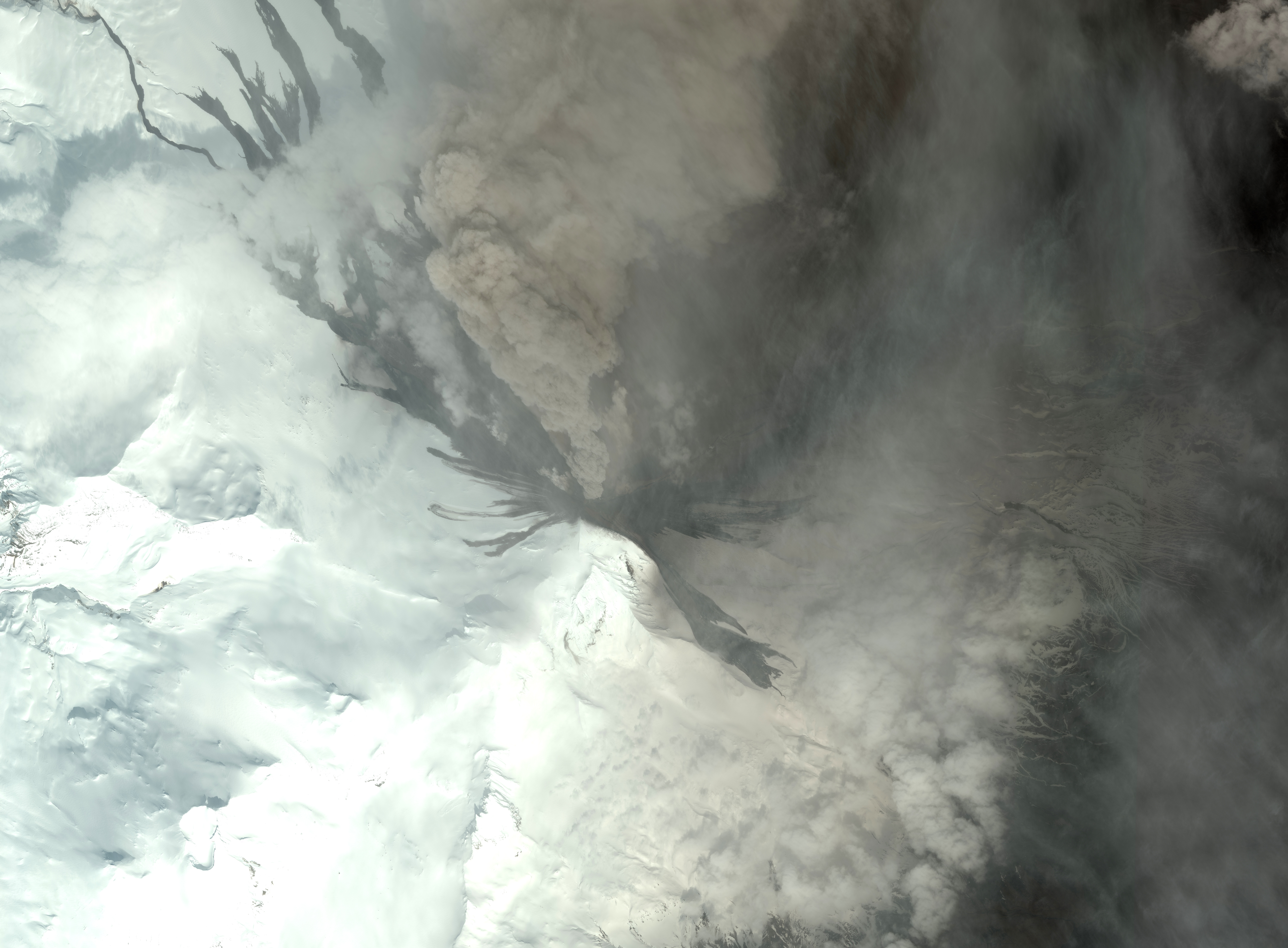Three volcanoes erupt at the same time in Alaska, in rare phenomena
They are currently not a threat to local communities.

Three volcanoes on Alaska's Aleutian islands are erupting simultaneously, but are currently not a threat to local communities, according to recent news reports.
This triple whammy is not common, but it's not unheard of, according to NBC News. "Alaska has a lot of volcanoes, and we typically see maybe one eruption every year, on average," Matthew Loewen, a research geologist with the Alaska Volcano Observatory, told NBC News. "To have three erupting at once is less common, but it does happen."
It's been at least seven years since three volcanoes erupted at once in Alaska, Loewen told NBC News.
Related: Images: 10 incredible volcanoes in our solar system
The three volcanoes — Pavlof, Great Sitkin and Semisopochnoi — are all under a code "orange" alert, which means that the volcano has the potential to erupt or eruptions are underway with minor ash emissions, according to the Alaska Volcano Observatory. Two others are under a code "yellow" alert, meaning that they are showing signs of unrest.
Pavlof volcano, which sits about 600 miles (966 kilometers) away from Anchorage, is showing low-level unrest and minor ash emissions, while the Great Sitkin volcano, which is closer to the center of the islands, has a continuous flow of lava from its summit crater, according to the Alaska Volcano Observatory and NBC News.
The third volcano, Semisopochnoi, is located on an uninhabited island in the western Aleutian islands, according to NBC News. That volcano has had several explosions, occasional strong seismic tremors or shaking and low-level ash emissions, according to the Alaska Volcano Observatory. All three volcanoes have been erupting for more than a week.
Sign up for the Live Science daily newsletter now
Get the world’s most fascinating discoveries delivered straight to your inbox.
The volcanoes are part of the so-called Aleutian Arc, which is a chain of volcanoes that sits on the boundary between two tectonic plates, according to Science Alert. These plates are large pieces of Earth's crust that move and bump into one another, spurring much of the planet's volcanic eruptions and earthquakes.
Read the original NBC News report here.
Originally published on Live Science.
Editor's note: This story was updated to correct the location of the Semisopochnoi volcano. It's in the western Aleutian islands, not the eastern U.S.

Yasemin is a staff writer at Live Science, covering health, neuroscience and biology. Her work has appeared in Scientific American, Science and the San Jose Mercury News. She has a bachelor's degree in biomedical engineering from the University of Connecticut and a graduate certificate in science communication from the University of California, Santa Cruz.










